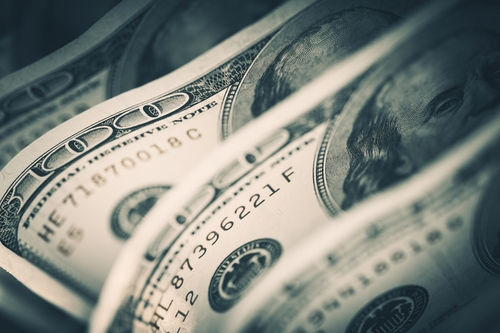Dollars eases on China tariffs, U.S. stocks tumble
NEW YORK (Reuters) – The dollar slid on Monday as China raised tariffs on U.S. goods in an escalating spat between the world’s two biggest economies, and stocks on Wall Street tumbled, led by a rout in technology shares, after U.S. President Donald Trump again attacked Amazon.com.
China bumped up tariffs by as much as 25 percent on 128 U.S. products, from frozen pork and wine to certain fruits and nuts, in response to U.S. duties on imports of aluminium and steel.
Gold snapped a three-session losing streak and the dollar fell after the tariffs, which are due to take effect on Monday, were announced late Sunday by China’s finance ministry.
The sell-off on Wall Street wiped out the tech-heavy Nasdaq index’s gains for the year and sent the benchmark S&P 500 below a closely watched technical level for the first time in nearly two months.
Trading was light as major European markets were closed for Easter Monday. Markets in Australia and Hong Kong also were shut.
Shares of Amazon (AMZN.O), Microsoft (MSFT.O), Intel (INTC.O) and Facebook (FB.O) were the biggest weight on MSCI’s all-country world stock index .MIWD00000PUS, which fell 1.58 percent. The four companies also were among the biggest drags on the benchmark S&P 500 index.
Nicholas Colas, co-founder of Datatrek Research in New York, said there was a “reset” on how much exposure to technology shares investors are willing to bear.
“This is still primarily a tech-led sell-off and what we’ve learned over the past two weeks is just how overweight investors were in technology,” Colas said.
The tariff news from China was not new and was not bearish, but is an ongoing uncertainty, said Thomas Martin, senior portfolio manager at Globalt Investments in Atlanta.
“What you’re seeing in the market is a change in leadership,” he said.
Trump’s comments on Amazon weighed on the equity market but further news on U.S.-China trade later this week has drawn investor interest, said Jeffrey Kleintop, chief global investment strategist at Charles Schwab & Co Inc in Boston.
“Everybody is bracing for that,” Kleintop said of expected U.S. tariffs on $50 billion to $60 billion a year of imports from China that will likely intensify U.S.-China tensions.
The Trump administration will unveil by Friday a list of advanced technology Chinese imports targeted for U.S. tariffs to punish Beijing over technology transfer policies.
The Dow Jones Industrial Average .DJI fell 674.06 points, or 2.8 percent, to 23,429.05. The S&P 500 .SPX lost 77.41 points, or 2.93 percent, to 2,563.46 and the Nasdaq Composite .IXICdropped 226.86 points, or 3.21 percent, to 6,836.58.
Shares of Amazon.com Inc fell 5.3 percent after Trump attacked the online retailer over the pricing of its deliveries through the U.S. postal system and promised unspecified changes.
“Only fools, or worse, are saying that our money-losing Post Office makes money with Amazon,” Trump tweeted.
Emerging market stocks .MSCIEF were down 0.25 percent.
The dollar fell for a second straight session.The dollar index .DXY fell 0.15 percent, with the euro EUR= down 0.16 percent to $1.2301. The Japanese yen JPY= firmed 0.55 percent versus the greenback at 105.70 per dollar.
Oil fell more than 2 percent, pressured by a rise in Russian production, expectations that Saudi Arabia will cut prices of the crude it sends to Asia, and a deepening trade spat between China and the United States.
Brent crude LCOc1 fell $1.53 at $67.81 a barrel. U.S. crude CLc1 lost $1.83 to $63.11.
U.S. drillers cut seven oil rigs in the week to March 29, bringing the total down to 797, the first decline in three weeks. The rig count is closely watched as an indicator of future U.S. oil output.
U.S. Treasury prices rose, with benchmark 10-year notes US10YT=RR up 7/32 in price, pushing yields down to 2.7171 percent.
Gold, which is often seen as a store of value during times of financial or political uncertainty, rose.
U.S. gold futures GCcv1 for June delivery settled up
$19.60, or 1.5 percent, at $1,346.90 per ounce.

